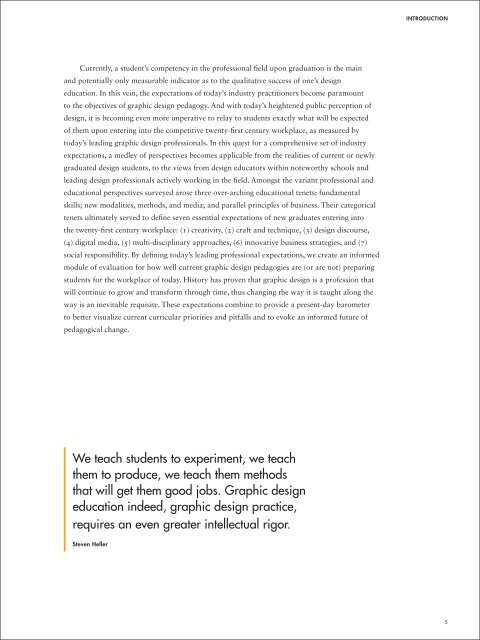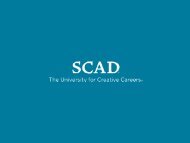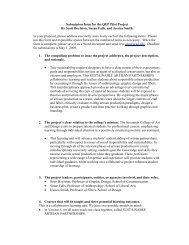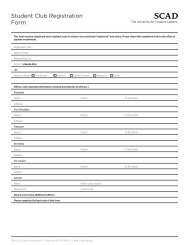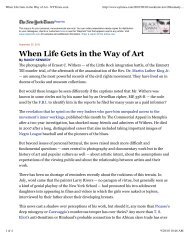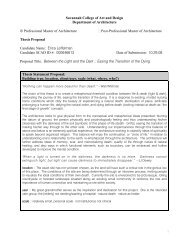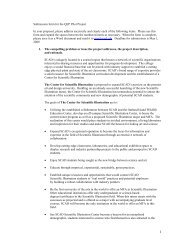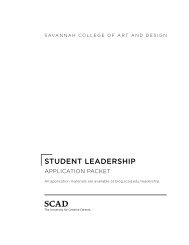Nicole Roberts MFA Thesis Visual Component Artwork - Savannah ...
Nicole Roberts MFA Thesis Visual Component Artwork - Savannah ...
Nicole Roberts MFA Thesis Visual Component Artwork - Savannah ...
You also want an ePaper? Increase the reach of your titles
YUMPU automatically turns print PDFs into web optimized ePapers that Google loves.
INTrODUCtiON<br />
Currently, a student’s competency in the professional field upon graduation is the main<br />
and potentially only measurable indicator as to the qualitative success of one’s design<br />
education. In this vein, the expectations of today’s industry practitioners become paramount<br />
to the objectives of graphic design pedagogy. And with today’s heightened public perception of<br />
design, it is becoming even more imperative to relay to students exactly what will be expected<br />
of them upon entering into the competitive twenty-first century workplace, as measured by<br />
today’s leading graphic design professionals. In this quest for a comprehensive set of industry<br />
expectations, a medley of perspectives becomes applicable from the realities of current or newly<br />
graduated design students, to the views from design educators within noteworthy schools and<br />
leading design professionals actively working in the field. Amongst the variant professional and<br />
educational perspectives surveyed arose three over-arching educational tenets: fundamental<br />
skills; new modalities, methods, and media; and parallel principles of business. Their categorical<br />
tenets ultimately served to define seven essential expectations of new graduates entering into<br />
the twenty-first century workplace: (1) creativity, (2) craft and technique, (3) design discourse,<br />
(4) digital media, (5) multi-disciplinary approaches, (6) innovative business strategies, and (7)<br />
social responsibility. By defining today’s leading professional expectations, we create an informed<br />
module of evaluation for how well current graphic design pedagogies are (or are not) preparing<br />
students for the workplace of today. History has proven that graphic design is a profession that<br />
will continue to grow and transform through time, thus changing the way it is taught along the<br />
way is an inevitable requisite. These expectations combine to provide a present-day barometer<br />
to better visualize current curricular priorities and pitfalls and to evoke an informed future of<br />
pedagogical change.<br />
We teach students to experiment, we teach<br />
them to produce, we teach them methods<br />
that will get them good jobs. Graphic design<br />
education indeed, graphic design practice,<br />
requires an even greater intellectual rigor.<br />
Steven Heller<br />
5


